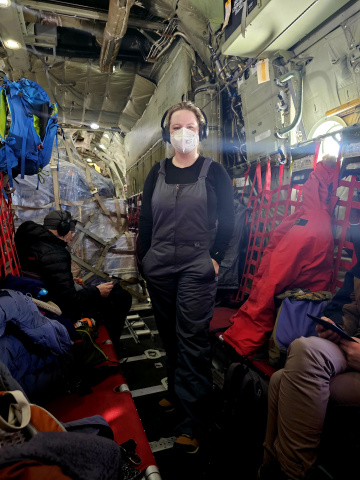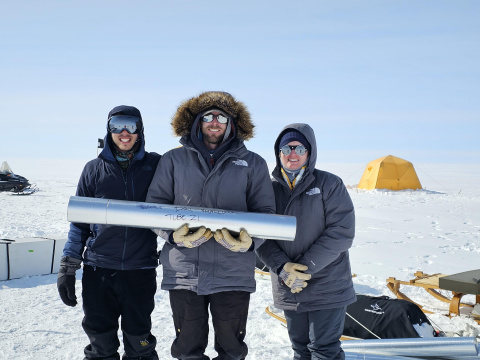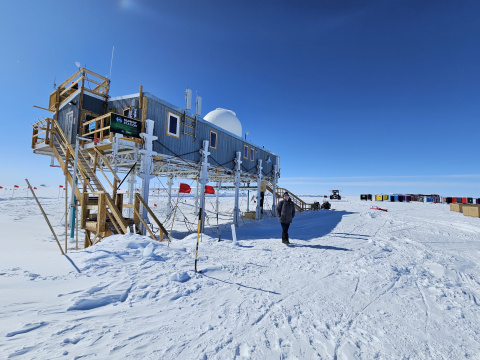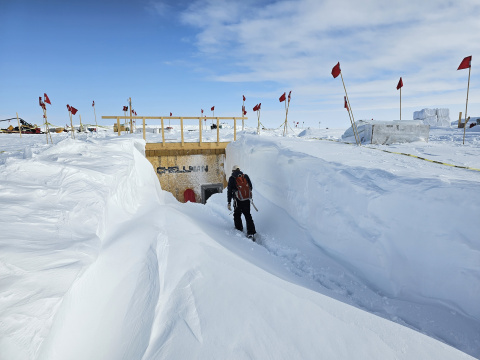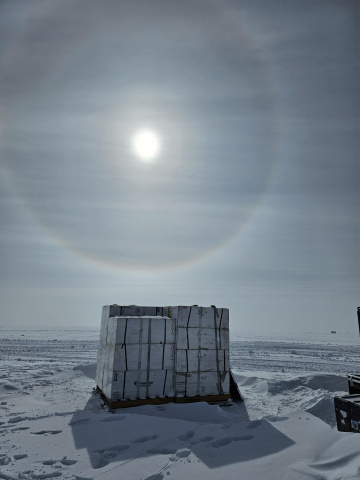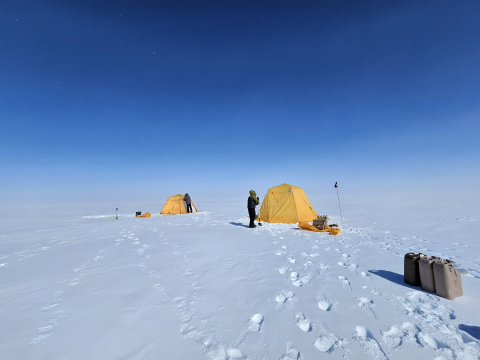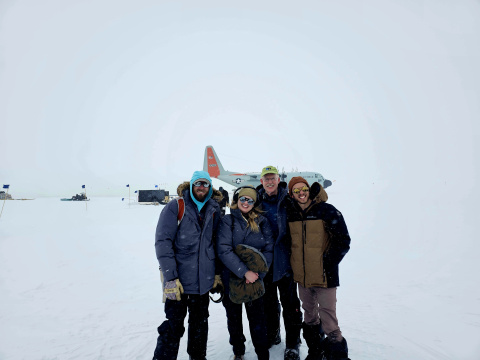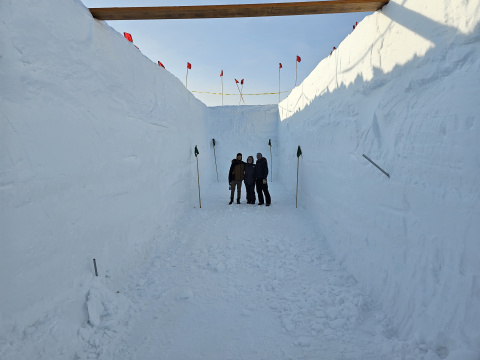Digging Into Greenland Ice: Unraveling Mysteries in Earth's Harshest Environments
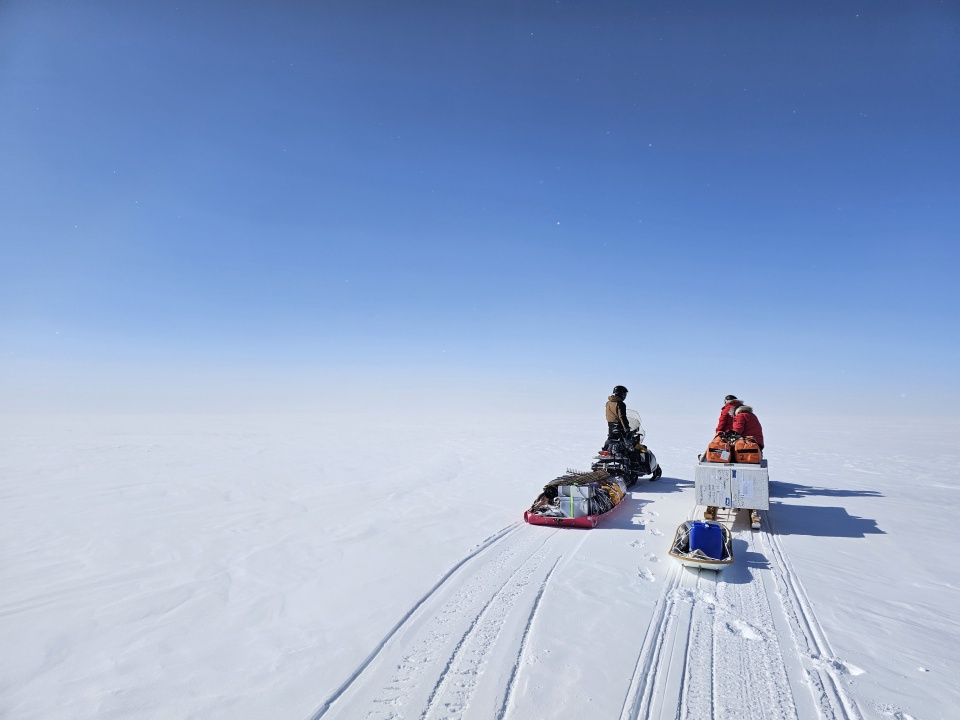
“You're in the middle of an ice sheet, and it’s one of the most desolate places on Earth. There are no living animals there. There are no plants there. The only animals you see are birds. They might be lost.”
That’s how Rachel Moore describes the view from the top of the Greenland Ice Sheet. “It's a really challenging environment, but it was really, really interesting to be there. I was there for nearly 50 days.”
Moore is an expert at collecting data in difficult research environments, traveling to some of the most extreme places on Earth in order to research microbes, and what hints they might give regarding astrobiology.
“It all started in grad school, when I joined a microbial ecology lab,” Moore recalls. “I pretty quickly learned that I love to do really difficult, challenging projects. I got interested in working around fire, biomass burning and forests, and I started collecting bacteria from the air. That was a challenge in and of itself, just trying to collect these really tiny things while standing in the smoke from the forest fires. But from that I learned that I loved to go out into the environment and collect things and try to understand everything around me.”
“I have a lot of different projects, but they all connect through astrobiology,” Moore says. “I’m interested in anything that hasn't been answered yet.” Moore is also leading a project called EXO Methane, which is investigating if different Archaea could survive in Martian and Enceladus-like environments. She’s also collaborating on a project that will send a probe to Venus next year.
Moore started her postdoctoral research at Georgia Tech, and is now continuing her work as a Research Scientist in the same laboratory. “The first project I started in this lab focused around how microbes can survive a really, really dry environment,” she adds. To study this, Moore traveled to the Atacama desert in Chile — the driest place on Earth, and also one of the best analogs to the surface of Mars. “What we were interested in there is how organisms survive intense radiation and intense desiccation. And how does that change as you look at different sites in the Atacama?”
Then, this past summer, Moore traveled to another extreme environment — Greenland. “Instead of being hot and dry, Greenland is extremely cold and dry,” Moore explains. “So it was similar in some aspects, but completely different in terms of logistics and sampling methods. Because we were there in the summer, the sun never set. We were also at high elevation — 10,530 feet above sea level.”
Beneath the ice
The project was started by Nathan Chellman and Joe McConnell from the Desert Research Institute (DRI), and Moore’s role this year was to investigate the microbiology component of the research. “They had been seeing some anomalies in methane and carbon monoxide in ice samples,” Moore says. “We were curious if microbes might be producing some of this, either in the ice core after it’s been sampled, or while it’s still in the glacier.”
“The microbes would not be swimming around or anything” in the ice cores, Moore explains, “but it’s possible that their metabolism is still active, and they’re potentially able to make some of the gases, like methane, in this frozen environment. Our goal was to measure these things in the environment.”
Gathering samples wasn’t easy. “We set up a lab on the glacier, and we set it up in a trench to try to keep any of the ice cores that we pulled out roughly at the same temperature as the glacier itself,” Moore says. Because of that, “weather was a huge, huge thing. Anytime it would get stormy, the wind would blow all of the snow around, and it would fill the entrance to our trench. We had to dig ourselves out several times. People would put out flags so that you could see your way back to the main house or back to your dorms.”
The team hopes that this research will give a more defined record of the past from the Greenland Ice Sheet, improving climate change predictions. Moore also notes applications in astrobiology, adding that “there are a lot of icy worlds like Mars, Enceladus, and Europa, with either an icy crust over the ocean or glaciers on the northern and southern poles.”
Moore was also able to test new technology in the field, using a tool built by Georgia Tech undergraduates alongside her advisor Christopher Carr, assistant professor in the School of Earth and Atmospheric Sciences. An ice melter that can be used to take and clean ice samples, the tool is a miniaturized prototype that may be able to help take measurements on Mars, or in similar remote environments in the future.
“Being able to take a tool that Georgia Tech undergraduates made to Greenland and test it on 600-year-old ice in the field was a really cool experience,” Moore adds. “We brought Starlink with us, and so I was able to video call the undergraduate team while I was testing their tool, which was really special.”
The team is now lab-analyzing ice cores that they brought back from Greenland, unraveling which microbes might be present and potentially active. “It's really interesting to see: Is this all chemistry? Is it biology based? Or is there some intersection of the two?” Moore says. “Maybe there's some chemistry or photochemistry happening, plus some biology happening. Whatever it is, we'll have to wait and see.”
